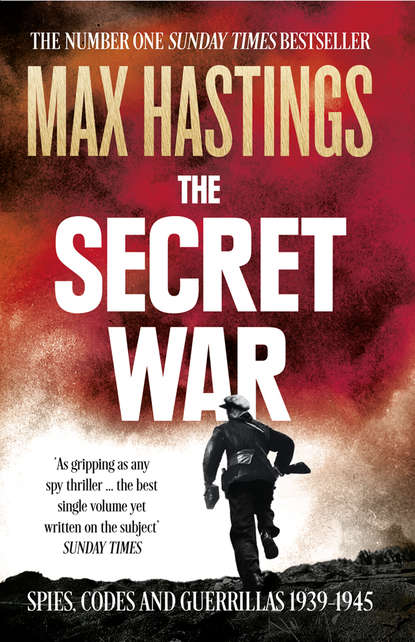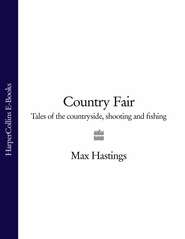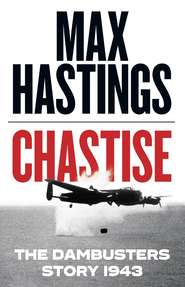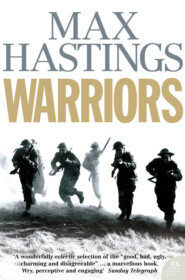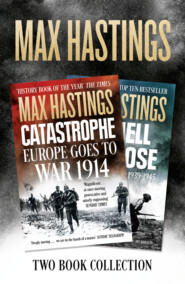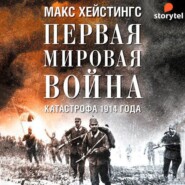По всем вопросам обращайтесь на: info@litportal.ru
(©) 2003-2024.
✖
The Secret War: Spies, Codes and Guerrillas 1939–1945
Настройки чтения
Размер шрифта
Высота строк
Поля
After Munich, with the doom of Czechoslovakia sealed, the Czech intelligence chief František Moravec was approached by three rival bidders for his services: Admiral Wilhelm Canaris for the Germans, Colonel Louis Rivet for the French, and MI6’s local man, Major Harold Gibson, for the British. Mistrusting the French, Moravec determined to throw in his lot with Britain. In anticipation of the Nazi occupation he did his utmost to reinforce links with local informants before himself leaving his country. He was able to transfer to London large sums of foreign currency, and hoped thus to ensure that he could sustain a Czech intelligence service in exile, though few of his agents were ever heard from again. On 3 March 1939 the Abwehr’s Paul Thummel, Moravec’s best German source, met him in Prague and reported that the city would be occupied on the 15th. ‘Agent A-54’ also warned that his entire staff would be seized by the Gestapo, and could expect no mercy. Moravec was amazed that Thummel declared himself willing to continue his own collaboration. The only proviso, said the Abwehr man, was that the Czechs must ensure that everything about himself in their files was destroyed. With that assurance, the two men parted. Thummel said, ‘Good luck, Colonel. This is not goodbye but Auf wiedersehen.’ The German officer took away with him two addresses for future correspondence, one in Holland, the other in Switzerland.
In Prague on the night of 13 March, Harold Gibson of MI6 – ‘Gibby’, as Moravec always called him, a small, slight figure with a moustache in proportion – drove a car into the Czech Intelligence Department’s garage. This was loaded with hundreds of files packed in canvas bags, which were borne away to the British embassy. The following afternoon, a Dutch civilian plane chartered by Broadway landed at Ruzyn airfield outside Prague to collect passengers for England – Moravec and ten officers of his staff. He chose them unsentimentally, he wrote later, taking those who would be most valuable in London, and those who knew too much to be left to the Gestapo. He felt obliged to leave behind his own wife and two daughters, and indeed to conceal from them his intended destination: he said he was merely making an overnight trip to Moravia.
The plane took off with difficulty amidst a snowstorm, which for a time threatened to force them down into the path of the approaching Germans. Moravec carried a briefcase containing 200,000 Reichsmarks and 100,000 Dutch guilders in cash – about £32,000 – to provide his little team with further seed money for future operations. As the plane passed over the mountains where lay Czechoslovakia’s frontier, the colonel buried his head in his hands and sobbed unashamedly at the prospect of exile. After a brief stop in Amsterdam, the party landed safely at Croydon. When former Czech prime minister Edvard Beneš later arrived in London, Moravec reported to his Putney residence to offer his services and those of his officers, which were readily accepted – his role was formalised the following year, when Beneš formed a government in exile. The colonel’s wife and children escaped from Prague and walked to safety in Poland, from whence they joined him in Britain.
In June 1939 Moravec was delighted to receive a letter, forwarded from a Zürich cover address, which began, ‘Dear Uncle, I think I am in love. I have met a girl.’ On the same page was a secret ink message, appointing a rendezvous in The Hague. It was from agent A-54, the Abwehr colonel Paul Thummel. The Czech officer who duly met him early in August warned Thummel that Moravec’s shrunken organisation no longer had cash to lavish upon him as generously as in the past, but the German responded dismissively that ‘more important matters than money are at stake’. He told the Czech that an invasion of Poland was planned for 1 September, and provided details of the latest Wehrmacht order of battle. He also handed over a list of Polish traitors working for the Germans. Thummel subsequently provided the Nazis’ amended timetable, including on 27 August a final date for the Polish invasion of 3 September 1939. For the people of Czechoslovakia, Poland, and now of all Western Europe, the sparring was over: the death struggle had begun.
* (#ulink_819469d7-4097-5f4f-8262-f4e4ae8d29a9) Both the GRU’s and NKVD’s officers and agents referred to their respective headquarters as ‘Centre’.
* (#ulink_6d60a948-b7b7-5e6b-85bb-70589856b491) Hamburger, like many others in this book, used a variety of names in the course of her career, starting out as Kuczynski and ending up as Werner. To avoid confusion, only one name is used throughout for all those described.
2
The Storm Breaks (#u4fc4ded5-8677-5eda-950d-acfe9e4567f1)
1 THE ‘FICTION FLOOD’
The first significant excitement of the British secret service’s war came in November 1939. A document later known as the ‘Oslo Report’ was sent anonymously to the British legation in Norway, then forwarded to London by its naval attaché. The parcel that reached Broadway contained several pages of German typescript and a small cardboard box. It represented the outcome of an earlier ‘feeler’ message to the legation, saying that if the British wanted to receive details of new scientific developments in Germany, they should make a minor change in the wording of a BBC broadcast to Germany: instead of starting, ‘Hello, this is London calling’, it was to say, ‘Hello, hello, this is …’ This was duly done, and after a short delay the ‘Oslo Report’ was submitted.
Its narrative covered a remarkable range of enemy activities. The anonymous author asserted that the Germans were developing acoustic and radio-controlled torpedoes; detailed the wavelengths on which German radar stations were operating; suggested bombing the Luftwaffe research station at Rechlin; and much else. The box contained a trigger tube, to be employed for new anti-aircraft shell proximity fuses. But the credibility of the whole document was undermined by the inclusion of two nonsenses: a claim that the Luftwaffe’s Ju-88 bombers were being produced at the impossible rate of 5,000 a month; and that a German aircraft-carrier, the Franken, was approaching completion at Kiel. These mistakes contributed to a verdict by Whitehall that the document should be dismissed as a German plant.
But the report was also read by Dr Reginald Jones, the outspoken, combative, twenty-eight-year-old assistant director of Air Ministry scientific intelligence. Jones shines forth as an authentic star in the wartime secret firmament. He was a social hybrid, son of a sergeant in the Grenadier Guards who displayed precocious brilliance at his south London school, and later proved as much at ease holding forth at grand country-house parties as fighting his corner in meetings chaired by the prime minister. Having had a notable early career in physics and astronomy at Oxford, where for a time he worked under Frederick Lindemann – later Lord Cherwell – he became fascinated by the possibilities of exploiting infra-red technology for the detection of aircraft, and in 1936 went to work for the Air Ministry. He was intolerant of slow-mindedness or bureaucracy wherever he encountered it, and there was plenty of both at Broadway Buildings, where after a brief stint at Bletchley Park he was invited to share an office with Fred Winterbotham.
In the course of the war Reg Jones became one of the foremost British investigators of German air technology. In November 1939, however, his achievements still lay in the future, and he was seen in Whitehall simply as a pushy young ‘boffin’ who seemed too free with his opinions in the presence of senior officers. Jones, almost alone, elected to believe that the Oslo document was authentic. His instinct became a near-certainty in the summer of 1940, when the Luftwaffe began to use the Wotan navigational beam to guide its bombers over Britain, exploiting principles mentioned by Oslo’s author. R.V. Jones, as he is known to posterity, found the information invaluable in devising counter-measures during the ‘Battle of the Beams’ that influenced the Blitz – which gained him the ear and the admiration of Winston Churchill. Again and again through the years that followed, when the British gained hints about new German weapons – the acoustic torpedo, for example – Jones was able to point out to service chiefs that Oslo had warned of them. After the war, in a retrospective on his own intelligence career, the scientist used the example of the 1939 document to urge that ‘casual sources should not be treated flippantly. It was probably the best single [scientific intelligence] report received from any source during the war.’
Only after an interval of almost forty years did Jones establish the document’s authorship. It was the work of a forty-five-year-old German physicist named Hans Ferdinand Mayer, who adopted a scientific career after being badly wounded on his first day in action as a conscript in 1914. He had been employed by Siemens since 1922, doing work that resulted in the award of eighty-two patents and the publication of forty-seven papers, and also spent four years as professor of signals technique at America’s Cornell University. During the inter-war years he formed a warm friendship with an Englishman working for GEC named Cobden Turner, who became godfather to Mayer’s second son. The German was especially impressed by a good deed: when he told Turner about the tragic case of a Jewish schoolchild disowned by her Nazi father, the Englishman arranged for the little girl to come to England, where for eight years she lived as a member of his own family.
When the international horizon darkened, on what proved Turner’s final visit to Germany Mayer told him that if war came, he would try to supply Britain with information about German scientific and technological progress. In late 1939 the scientist exploited a chance business trip to Norway to make good on his promise. He borrowed an old typewriter from the porter at the Hotel Bristol and composed the ‘Oslo Report’, which was dispatched in two parts to the British embassy on 1 and 2 November. Mayer also wrote directly to Cobden Turner, suggesting further contact through an intermediary in neutral Denmark. But although this letter caused two British security officers to visit and question the GEC man, for reasons unknown nothing was done to open communication with Mayer – MI6’s official history makes no mention of this courageous German. In August 1943 Mayer was arrested by the Gestapo in his office at Siemens, and charged with listening to the BBC. He was confined in Dachau, but was fortunate enough to be employed in a technical plant, where he survived the war. His brave gesture was prompted by admiration for Cobden Turner, whom he liked to regard as a representative Englishman. Recognition of Mayer’s contribution, however, came only from Reg Jones.
Among the reasons the ‘Oslo Report’ received such a chilly reception is that it was debated in Whitehall just as the British secret community reeled in the wake of a successful German ruse. On 9 November 1939, during the first, passive phase of the war that became derisively known as the ‘sitzkrieg’, the two senior MI6 officers in the neutral Netherlands, Captain Sigismund Payne Best and Major Richard Stevens, drove with a Dutch officer in Best’s Lincoln Zephyr car to a rendezvous at the Café Backus, situated between the Dutch and German border customs barriers at Venlo. Within minutes of their arrival, they were seized by armed men. When the Dutchman drew a pistol and fired at one assailant, he was himself shot dead. Best, Stevens and their local driver were then hustled 150 yards to the frontier: their kidnappers were Nazi counter-intelligence officers of the SD, led by the branch’s later boss, Walter Schellenberg, who was narrowly missed by the Dutch officer’s bullet. The British spies were fortunate enough to keep their lives, but spent most of the rest of the war in Sachsenhausen concentration camp. In contradiction of myths about heroic silence under interrogation, Stevens and Best told their abductors what they knew about MI6, which was plenty: its Continental operations were chiefly conducted from their own Hague station.
‘The Venlo incident’, as it became known in Whitehall, derived from an approach some weeks earlier by supposedly anti-Nazi German generals eager to negotiate with Britain. MI6 became much excited by the prospect of brokering a deal, though the Foreign Office was prudently sceptical. Sir Alexander Cadogan wrote in his diary on 23 October: ‘I think they [the German “plotters”] are Hitler agents.’ The war cabinet was informed a week later, and Winston Churchill, then still First Lord of the Admiralty, expressed violent objections to any parley. But the government authorised MI6 to continue discussions, provided – as Cadogan strictly instructed – nothing was put in writing to the supposed dissidents. The British ignored the danger that their interlocutors would play not merely a diplomatic game with them, but a rougher one. They should have been alert to such an outcome, because the Nazis had previous form as cross-border kidnappers: in April 1934 they had lured to the German frontier a Czech intelligence officer, twenty-nine-year-old Captain Jan Kirinovic, then rushed him across. A Gestapo witness gave evidence at Kirinovic’s subsequent trial that he had been arrested on German soil, and Kirinovic was sentenced to twenty-five years’ hard labour. Although in the following March the Czech officer was exchanged for two German spies, he died insane a few years later as a result of the drugs administered to him by the Gestapo, notably scopolamine.
In November 1939, it was symptomatic of MI6’s institutional weakness that its Hague station employed Folkert van Koutrik, an Abwehr informant. The supposed representative of the disaffected German generals, ‘Major Schaemmel’, was in truth the RSHA’s Schellenberg, whom the British officers obligingly supplied with a wireless transmitter. Either Hitler or Himmler personally authorised the kidnapping, which the British at first sought to keep secret. When an official asked Cadogan what was to be said about ‘the brawl in Holland’, the subject of fevered rumour and speculation, the permanent under-secretary ordered the issue of a ‘D’ Notice, forbidding mention of it in the British press. Amazingly, for a fortnight after Venlo the German ‘conspirators’ sustained a dialogue with MI6, until on 22 November Himmler lost interest and the Germans shut down the exchange after sending a last derisive message to Broadway. The Nazis then publicly announced that Best and Stevens had been engaged in an assassination plot against Hitler. Meanwhile van Koutrik’s betrayal went so far undetected that he secured employment with MI5 in London, and it was very fortunate that he broke off contact with the Abwehr – perhaps for lack of means of communication – because it was within his later knowledge to have betrayed elements of the Double Cross system to them.
Inside Whitehall, MI6 sought to talk down Venlo, arguing that the Germans had behaved crassly by grabbing the two officers instead of sustaining a double-cross game with them. It is hard to overstate the episode’s significance, however, for the future course of the secret war. British espionage activities on the Continent, such as they were, suffered a devastating blow: the Germans were able to relieve Best of a list of his station’s contacts, which he had taken in his pocket to the rendezvous. The reputation of the secret service within the British government, not high before the débâcle, afterwards sagged low indeed. Guy Liddell of MI5 speculated in his diary that Best, a preposterous figure who affected a monocle, might have been a double agent – ‘the real nigger in the woodpile. [He] had apparently been in fairly low water and it was noticeable that after he became associated with [Dr Franz] Fischer [a Nazi double agent in Holland] he seemed to be very well in funds.’ There is no reason to think Liddell’s suspicions justified. Mere bungling was responsible for the fiasco, though Walter Schellenberg asserted later that Best was willing to be ‘turned’. Meanwhile, the Dutch were embarrassed by the revelation that one of their own intelligence officers had been complicit in a British plot, which strengthened the Nazis’ propaganda hand by compromising Holland’s proclaimed neutrality.
A further consequence of Venlo was that the British became morbidly suspicious of any approach – and there were several, later in the war – by Germans professing to represent an ‘anti-Hitler Resistance’. In one sense their caution was prudent, because most of the aristocrats and army officers who became engaged in plots against the Nazis cherished absurd fantasies about the Germany they might preserve through a negotiation with the Western Allies. Former Leipzig mayor Karl Gördeler, for instance, was a nationalist with views on German territorial rights in Europe that were not far short of Hitler’s. Even had the Führer perished, there would have been nothing plausible for Germany’s enemies to discuss with his domestic foes. At the very least, however, British paranoia about suffering a repeat of the Venlo humiliation permanently excluded MI6 from some useful sources, which the Russians and later the Americans were left to exploit. Moreover, for the rest of the war Broadway’s chiefs maintained an exaggerated respect for their German adversaries, derived from the memory of having been fooled by them in November 1939.
Through the icy winter months of the ‘Phoney War’, the GC&CS at Bletchley struggled with the intractable Enigma problem, while Broadway’s spies produced little or no useful information about the enemy and his intentions. Kenneth Strong of War Office Intelligence wrote: ‘We had a continuous stream of callers from the Services with an extraordinary variety of queries and requests. What were the most profitable targets for air attacks in this or that area, and what effect would these attacks have on the German Army? Was our information about these targets adequate and accurate? How was the German Army reacting to our propaganda campaigns? I found some quite fantastic optimism regarding the effects from propaganda. The dropping of leaflets was considered almost a major military victory.’
Some MI6 officers went to elaborate lengths to conceal their lack of agent networks. Reg Jones cited the example of Wilfred ‘Biffy’ Dunderdale, who was responsible for France, and fed to Jones’s branch a succession of tasty titbits on the German Ju-88 bomber, allegedly collected by spies. First there was information about its engines; then its electrics; and somewhat later its armament. Jones teased Dunderdale that he must have secured a copy of the aircraft’s operating handbook, then fed extracts to Broadway, to create an impression of multiple sources. The hapless officer admitted that Jones was right, but begged him to keep his mouth shut. He could keep his bosses much more interested, he said, by drip-feeding the data. This was not the only occasion when Dunderdale – like officers of all intelligence services – sought to ‘sex up’ the means by which his material had been acquired. He also produced details of German troop movements supposedly secured by agent networks, which in reality derived from French intercepts.
Much could be learned from an enemy’s wireless transmissions, even without breaking his codes, through ‘traffic analysis’ – the study of signal origins, volume and callsigns to pinpoint units, ships, squadrons. Useful information was also gleaned by the ‘Y Service’, eavesdropping on voice transmissions, and by breaking simple enemy codes used for passing low-grade messages. The French forward cryptographical unit was based at ‘Station Bruno’, in the Château de Vignobles located at Gretz-Armainvilliers, fifteen miles east of Paris. Bruno received an important reinforcement following the fall of Poland. Guy Liddell of MI5 recorded on 10 October 1939 that seventeen Polish cryptanalysts were seeking asylum in Britain. Bletchley Park shrugged dismissively that it had no use for them, even though its chief Alastair Denniston had met some of the same men in Warsaw a few months earlier, and knew that their claims to have penetrated Russian and German ciphers ‘can to some extent be maintained’.
Denniston suggested that they would be more useful at the Château de Vignobles, working with Gustave Bertrand, which was where they were sent – though Bletchley later changed its mind and tried in vain to get them back. It was at Bruno, on 17 January 1940, that the ex-Warsaw group broke its first wartime Enigma signal. By 11 March Col. Louis Rivet, head of the French secret service, was writing in his diary: ‘The decrypts of the Enigma machine are becoming interesting and numerous.’ During the months that followed, however, material was read far too slowly – out of ‘real time’ – to influence events on the battlefield. Instead, Allied intelligence officers strove to make sense of a jumble of humint warnings, of varying degrees of plausibility, about when Hitler intended to strike in the West.
The first of these had come in the previous November when Major Gijsbert Sas, Dutch military attaché in Berlin, received a dramatic tip-off from his friend Colonel Hans Oster of the Abwehr: the Wehrmacht, said Oster, would launch a full-scale offensive against the British and French armies on the 12th of that month. This coincided with several other identical or similar warnings – including an important one from Col. Moravec’s Czechs in London, relayed by their man in Switzerland from Agent A-54, the Abwehr’s Paul Thummel. When nothing happened on 12 November, the British and French chiefs of staff assumed that they were the victims of Nazi disinformation. The Dutch already suspected Sas of being a double agent, and the credibility of the other sources, including A-54, suffered accordingly. Yet the warnings were correct. Hitler had indeed intended to strike in November. He was enraged that his generals insisted upon a last-minute postponement until spring, because the army was unready to move. Here was a vivid illustration of a precept later advanced by a British Army intelligence officer: ‘Perfect intelligence in war must of necessity be out-of-date and therefore ceases to be perfect … We deal not with the true, but with the likely.’
The next excitement took place one day in January 1940: thick fog caused a German courier aircraft flown by Major Erich Hönmanns to forced-land in neutral Belgium. Local police arrested the pilot and his passenger, an officer named Reinberger, interrupting them as they attempted to burn papers they carried, and retrieved the charred sheets from a stove. Within forty-eight hours the French and British high commands were reading the Wehrmacht’s plan for its intended invasion of France and the Low Countries, focused on a thrust through Holland and Belgium. Here was a textbook example of a genuine intelligence coup, with wholly unhelpful consequences. The French were confirmed in their conviction that the Germans would attack through Belgium as they had done in 1914, and as all France’s deployments anticipated. The British suspected an enemy deception: the material seemed too good to be true. Guy Liddell of MI5 wrote wearily on 14 January: ‘A German aeroplane came down in Belgium … with certain papers found on the pilot indicating projected attack by the Germans on Belgium and Holland. It looks rather as if this may have been part of the scheme for the war of nerves.’ Cadogan at the Foreign Office described receiving ‘complete plan of German invasion of the Low Countries. Very odd. But one can’t ignore these things, and all precautions taken.’
Kenneth Strong wrote ruefully afterwards: ‘So often I have heard it said that if we only had the plans of the other side things would be simple: when they actually came our way we found great difficulty in persuading ourselves that they were genuine.’ Most important, however, the capture immediately forfeited all virtue, because the German proprietors of the plan knew that the Allies had it. Thus, Hitler insisted on changing the invasion concept, to thrust instead through the Ardennes, which proved the one authentic strategic inspiration of his life. Here was another critical lesson about intelligence, especially important for codebreakers: captured material became worthless if its originators discovered that it was in enemy hands.
Alexander Cadogan noted in his diary for 19 January 1940 that Stewart Menzies now seemed to expect the Germans to attack soon after 25 January, and added dismissively, ‘but he’s rather mercurial, and rather hasty and superficial (like myself!)’. If this remark somewhat short-changed the diarist, it was scarcely a ringing endorsement of ‘C’. There was one further strand: low-grade Abwehr messages decrypted by MI5’s Radio Intelligence Service offered indications about the looming onslaught. At that time, however, machinery was lacking to analyse such material, to feed it into the military command system and ensure that notice was taken by commanders. In that pre-Ultra universe, politicians, diplomats and generals were chronically sceptical about intelligence of all kinds. When a new warning reached MI6 via Moravec’s ‘London Czechs’ – that Abwehr officer Paul Thummel expected a great Wehrmacht thrust on 10 May, it vanished in the welter of ‘noise’ that spring.
The 9 April German invasion of Norway caught the Western Allies totally by surprise. Though no decrypts were available, the Admiralty ignored or misread plentiful clues about Hitler’s intentions. When the Wehrmacht’s amphibious forces began to land on the Norwegian coast, the Royal Navy’s major units were far away, awaiting an anticipated breakout into the Atlantic by German battleships. Through the weeks that followed, Wehrmacht eavesdroppers easily tracked the British brigades struggling to aid the little Norwegian army, while intelligence learned little or nothing about the invaders’ lightning movements.
On 10 May 1940, Hitler launched his Blitzkrieg in the West. The panzers swept through the Ardennes, across the Meuse, and thence to the Channel coast and into the heart of France. Much of the information sent back from the front by French units was so fanciful that a headquarters intelligence officer, André Beaufre, dismissed it contemptuously as a ‘fiction flood’. Gen. Maurice Gamelin, the Allied commander-in-chief, rejected every report that contradicted his obsessive belief that the Germans still planned to make their main attack through Belgium.
The campaign proved a triumph for the German army’s intelligence department, as well as for its generals. An anglophile and bon viveur, Lt. Col. Ulrich Liss, headed Foreign Armies West – FHW, the Wehrmacht’s principal intelligence evaluation department. Liss, who was exceptionally able and energetic, called sigint ‘the darling of all intelligence chiefs’, because it could be trusted as spies could not – and in May 1940 the best of it was in the hands of his own staff. During the long, static winter, German interceptors had identified the locations of most of the Allies’ formations, much assisted by the insecurity of the French army’s wireless-operators and headquarters staffs, who often discussed plans and deployments in plain language. Col. Handeeming, radio intelligence’s interception chief with Army Group A, was explicitly commissioned to monitor the French Seventh Army’s advance into Belgium, which he did with notable efficiency.
Liss’s men also benefited from securing vast numbers of Allied prisoners. All armies gleaned much from PoW interrogation. Throughout the war, even if few prisoners knowingly betrayed secrets, amid the shock of capture most gave their captors more than the regulation ‘name, rank and number’. Rommel’s intelligence staff found that British prisoners talked freely until a late stage of the North African campaign. One of Montgomery’s officers enthused to the Germans, with almost insane indiscretion, that Eighth Army’s radio monitoring service was ‘brilliant in every respect’. A German wrote that British officers were repeatedly captured ‘carrying important lists, codes and maps’. It was a standard technique for intelligence officers to engage PoWs in apparently innocent conversation about non-military subjects. The Wehrmacht’s ‘Guidelines for the interrogation of English prisoners of war’, dated Berlin, 16 April 1940, urged commanders whenever possible to use interrogators familiar with Britain and the British. ‘If cordially addressed,’ said the briefing note, ‘every Englishman will at once answer all questions entirely frankly.’ Beyond immediate tactical issues, the Intelligence Department advised:
Special value is set on probing prevailing economic and social circumstances in England. Answers to the following questions are useful:
a) What are you told about Hitler?
b) What are you told about the Nazis?
c) What are you told about the Gestapo?
d) What are you told about the Jews?
e) What are you told about food conditions in Germany?
f) What are you told about military successes?
g) How do you make propaganda?
h) How are women and children cared for?
i) Do you take care of elderly parents no longer able to work, whose sons are soldiers? …
k) What is the food situation – especially meat, vegetables, eggs, butter, and bread?
l) What do you think of the black-out?
m) Who is currently the most popular man in England?
n) Who do you consider the most forceful personality in the British cabinet?
o) Do you listen to German radio?
p) Do you like [Lord] Haw-Haw [the Nazi propaganda broadcaster William Joyce]?
q) How are your relations with the French?
r) Do you believe that Germany is bent on world conquest?





